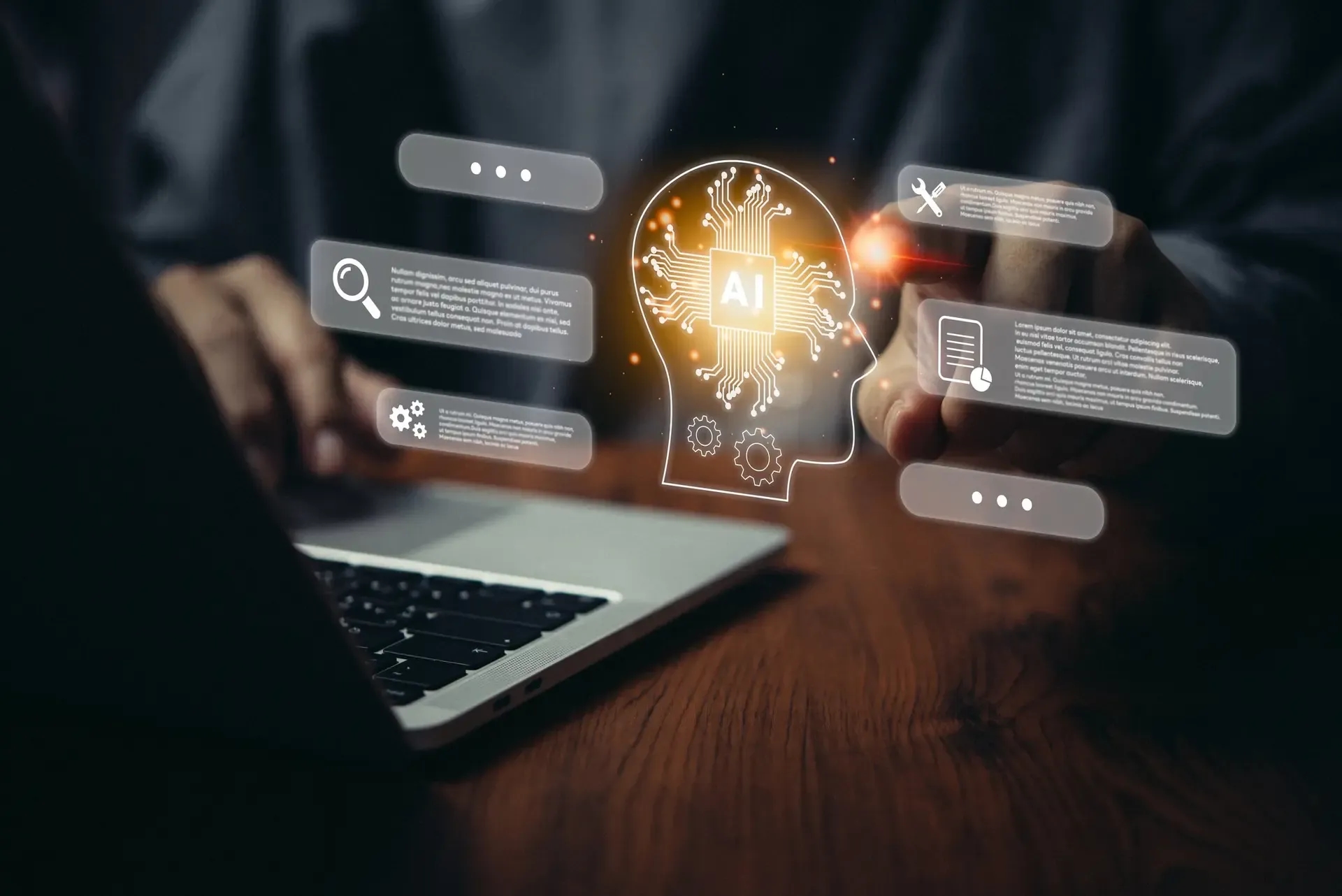AI and Automation: The Benefits for Business
Date Published

As we step into 2025, artificial intelligence has moved beyond being a buzzword to become a critical driver of business efficiency and growth as it gets better with each passing day. This comprehensive guide will help you understand how to leverage AI automation to transform your business operations, increase productivity, and drive sustainable growth.
What Is AI Automation in 2025?
AI automation combines artificial intelligence and automation technologies to perform complex tasks that traditionally required human intervention. Unlike traditional automation, AI systems can learn, adapt, and improve their performance over time.
Why AI Automation Matters for Business Growth
1. Efficiency and Cost Savings
AI automates repetitive tasks, freeing up time for employees to focus on high-value activities.
Example: AI-powered invoice processing reduces manual data entry, saving hours of work and reducing errors.
2. Improved Decision-Making
AI analyzes vast amounts of data quickly, providing actionable insights to improve business decisions.
Example: Predictive analytics tools help businesses forecast market trends and customer behavior.
3. Enhanced Customer Experience
From chatbots to personalized recommendations, AI improves how businesses interact with their customers.
Example: AI chatbots provide 24/7 customer support, reducing response times and increasing satisfaction.
4. Scalability
AI automation enables businesses to handle increasing workloads without a proportional increase in costs.
Top Use Cases of AI Automation in 2025
1. Marketing Automation
Personalizing email campaigns with AI-based recommendations.
Automating ad targeting to reach specific audience segments.
Tool Example: HubSpot’s AI-powered marketing platform optimizes campaigns for better ROI.
2. Customer Support
AI chatbots handling FAQs and routing complex queries to human agents.
Sentiment analysis tools identifying customer emotions in real-time.
Tool Example: AcidCat’s AI chatbot integrates with CRM systems for seamless customer support.
Engage your customers like never before.
Free up time for your team while delivering faster, more personalized service.
3. Operations and Logistics
Predictive maintenance for equipment using IoT and AI.
Inventory management through AI-powered demand forecasting.
Tool Example: IBM’s Watson Supply Chain optimizes inventory management.
4. Human Resources
AI screening resumes to identify top candidates.
Automating employee onboarding with AI-guided workflows.
Tool Example: Workday’s AI tools streamline recruitment and HR processes.
5. Financial Automation
Fraud detection through real-time transaction monitoring.
Automating bookkeeping and financial reporting.
Tool Example: QuickBooks Online uses AI for automated financial management.
How to Implement AI Automation in Your Business
Step 1: Identify Bottlenecks
Assess which processes in your business consume the most time and resources. Examples include:
- Manual data entry
- Repetitive customer support queries
- Inefficient supply chain management
Step 2: Choose the Right Tools
Select AI tools tailored to your specific needs. Consider the following categories:
Marketing - HubSpot, Marketo, ActiveCampaign
Customer Support - Drift, Zendesk AI, Intercom
HR & Recruitment - Workday, BambooHR, Recruitee
Finance - QuickBooks Online, Xero
Operations - IBM Watson, UiPath
Step 3: Start Small
Begin with one or two areas where AI can make the most immediate impact, such as customer support or marketing. Gradually scale up as you see results.
Step 4: Train Your Team
Ensure your employees are equipped to work with AI tools by providing training and resources.
Step 5: Monitor and Optimize
Regularly evaluate the performance of your AI tools using metrics like:
- Time saved
- Cost reductions
- Customer satisfaction scores
AI Automation Trends to Watch in 2025
1. Hyper-Automation
Combining multiple AI technologies for end-to-end process automation.
2. No-Code AI Platforms
Enabling non-technical teams to implement AI solutions without writing code.
3. AI-Powered Predictive Analytics
Using AI to anticipate future trends and behaviors more accurately than ever.
4. Voice and Visual AI
Voice-based AI tools and visual search technologies are set to redefine user experiences.
Common Challenges and How to Overcome Them
1. High Initial Costs
Solution: Start with scalable, subscription-based AI tools to reduce upfront investment.
2. Resistance to Change
Solution: Involve employees early in the process and provide training to ease transitions.
3. Data Privacy Concerns
Solution: Use AI tools that comply with regulations like GDPR and ensure secure data handling.
Conclusion
AI automation is no longer a luxury but a necessity for businesses aiming to grow in 2025 and beyond. By streamlining operations, enhancing customer experiences, and providing data-driven insights, this technology empowers businesses to achieve more with less effort.
Take the first step today: identify areas of your business that could benefit from AI, explore the tools available, and create an action plan to integrate automation into your workflows.
Need help getting started? We specialize in automation solutions that streamline processes and drive business growth.
Transform your business with AI today.
Save time, cut costs, and enhance productivity with smart, tailored solutions.